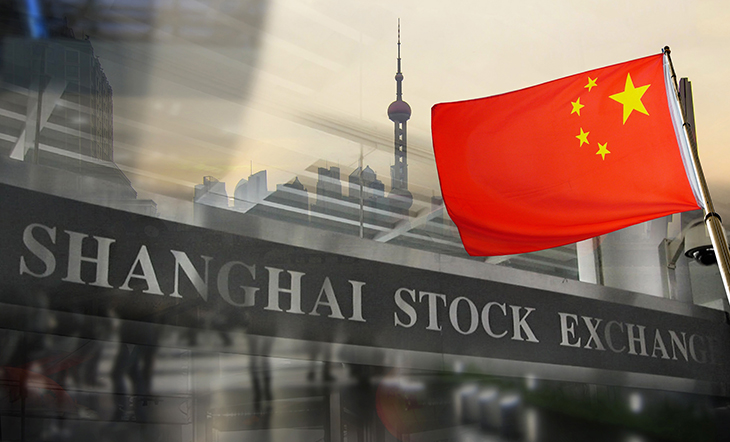We on the Quantitative and Multi-Asset Class team at Neuberger Berman have two fundamental beliefs about the onshore-listed, China A-share market: (i) it is significant enough to be considered an asset class in its own right and (ii) a quantitative investment approach is very well suited to it.
The first is becoming a widely accepted view. With some 3,500 listed companies across all 11 Global Industry Classification Standards sectors and an end-2018 market capitalization of over $8 trillion, it is the second-biggest equity market in the world, representing the second-biggest economy.
The gradual liberalization of this market, including the Shanghai-Hong Kong and Shenzhen-Hong Kong Stock Connect initiatives and culminating in A shares’ inclusion in benchmark MSCI indices, has brought us to a point where investing in China A shares is not as operationally onerous for non-Chinese investors as it once was. Indeed, the scale of the new opportunity for global investors has enabled me to return to my home country as part of a growing team of onshore equity and bond investors, after 21 years of studying, teaching, researching and working in the U.S.
Our second belief requires further evidence and argument, but it is arguably quite intuitive. Quantitative investing seeks to remove human biases from decision-making in order to take advantage of human biases in the market. In a volatile market arguably dominated by over-trading retail investors such as in China A shares, this approach may be especially powerful. Sure enough, our research suggests that the A-share opportunity set could be as rich as that of the developed markets 20 years ago, in the heyday of quant investing.
Profits Left on the Table
According to the Shanghai Stock Exchange Factbook of 2018, non-institutional, retail investors contributed 80% of A shares’ trading volume in 2017, but took just 10% of the total profits.
The Shenzhen Stock Exchange’s 2017 annual retail investor survey, based on survey results from 15,890 investors from 307 cities, offers some clues as to why that was: the survey reports that the majority of investors hold just a handful of stocks and trade, at best, on what they read on internet news and, at worst, on market rumors. According to the survey, almost half of investors characterize their behavior as short-term trend-following and only one in 12 claims to be contrarian, despite A shares’ tendency for strong, short-run reversals that, over time, generate losses for short-term trend-followers.
By looking at the performance of some simple factors in the A-share market, we can actually see the extent of the profits left on the table by these behaviors.
The charts below show how the size, value and reversal factors have performed strongly in China over the past 13 years, but have barely worked at all in the U.S. market.
These portfolios are long stocks with low market capitalization, low price-to-book ratios and the worst one-month returns, respectively. This suggests that many China A-share investors leave value on the table by favoring expensive, upward-trending stocks in large companies—perhaps because larger companies feature more often in the headlines.
Three Simple Factors That Continue to Perform Well in China, Despite Fading in the U.S. Market
Cumulative and annualized returns and risk for the size, value and reversal factors in the China and U.S. equity markets, 2006 – 2018

| Size | Value | Reversal | ||||
|---|---|---|---|---|---|---|
| China | U.S. | China | U.S. | China | U.S. | |
| Ann. Ret. | 8.13% | 0.18% | 11.88% | -2.04% | 15.39% | 0.37% |
| Ann. Vol. | 20.87% | 8.30% | 20.34% | 9.02% | 15.46% | 10.53% |
| IR | 0.39 | 0.02 | 0.58 | -0.23 | 1.00 | 0.04 |
Source: Juyuan, Kenneth R. French (http://mba.tuck.dartmouth.edu/pages/faculty/ken.french/index.html), Neuberger Berman. Data as of December 31, 2018.
The size factor is created by going long companies with low market capitalization and short companies with higher market capitalization; the value factor is created by going long stocks with low price-to-book ratios and short stocks with high ratios; and the reversal factor is created by going long stocks with the worst one-month returns and short those with the best. Annualized return and volatility data are calculated based on historical returns of respective portfolios from 2006 to 2018, using monthly returns. The China market includes substantially all A shares, excluding only those with the lowest liquidity. The U.S. market includes all of the stocks in the Center for Research in Security Prices (CRSP) database. All portfolios are hypothetical long-short portfolios gross of transaction costs. For illustrative and discussion purposes only. While these data series are not reflective of actual investment returns, they are factors constructed using a disciplined methodology and, in our view, can be used as proxies for Alternative Risk Premia. The performance shown does not represent the performance of any Neuberger Berman product or strategy and does not reflect the fees and expenses associated with managing a portfolio. Investing entails risks, including possible loss of principal. Past performance is no guarantee of future results. See Hypothetical Backtested Performance Disclosures for more information on Fama/French Factors.
We also tested historical returns to what we call the “turnover factor.” We measured the 20-day average of daily ratios of shares traded to shares outstanding, and created a portfolio that was long the stocks with the lowest average ratio and short the stocks with the highest. This factor tends not to generate a return in developed markets, but over the past 13 years in China A shares it has been even more successful than size, value or reversal, accumulating almost an 800% return, or 18% annualized. We think this reflects the scale of the profits left behind by the overactive trading of retail investors.
The picture when we look at the momentum factor—long stocks with the best 12-month returns, excluding the most recent month, and short those with the worst returns—is very different. This factor has not performed particularly well in either market, but it has been more rewarding in the U.S. than in China A shares.
In short, the retail investors described in the Shenzhen Stock Exchange survey, who trade far too often between expensive, upward-trending stocks in large companies, appear to be pursuing just about the worst behaviors possible for their home market.
Similar Scale, Different Nature
Testing these simple factors is only the beginning of the rich story of quantitative investing in China, and certainly not the basis of a fully developed systematic A-share strategy. The tests do teach us two very important things, however.
First, the tests indicate that the nature and the extent of the A-share opportunity is closely related to the knowledge gaps and biases of the investors who currently dominate this market.
Second, while the rewards to quantitative investing in China A shares could be substantial, factors that generate returns elsewhere do not necessarily generate returns in China. Successful quantitative investing in China is therefore not a matter of simply transporting U.S. or European equity factor models to this new market.
In many ways, the scale and richness of the China A-share opportunity recalls the developed markets 20 years ago, in the heyday of quant investing—but that opportunity may be very different in nature.






